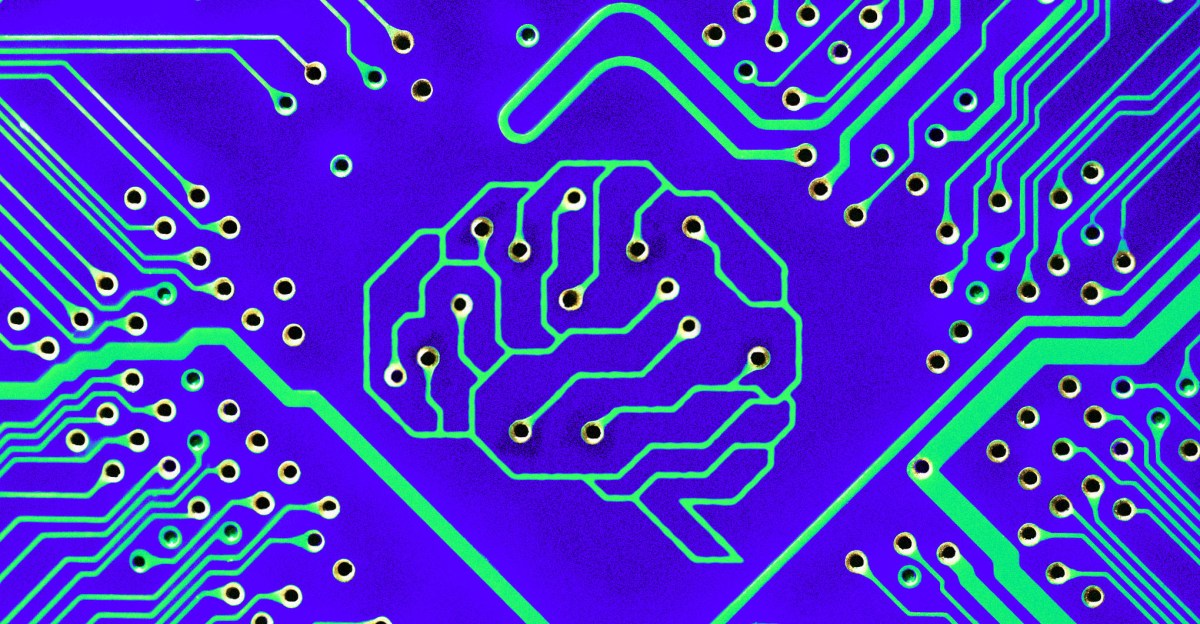
Is AI the end of software engineering or the next step in its evolution?
Sources: https://www.theverge.com/ai-artificial-intelligence/767973/vibe-coding-ai-future-end-evolution, The Verge AI
TL;DR
- AI-assisted vibe-coding lowers the barrier to coding for beginners but does not automatically produce production-ready software; it benefits from disciplined editing and architectural thinking.
- Modern AI models can understand context across folders and even multiple codebases, but their output often needs structural editing and refinement by a human editor-coder.
- The future of AI-assisted coding may hinge on an editorial workflow: outline, then iteratively refine with targeted prompts to minimize delta from the vision.
- Security concerns around vibe-coding are debated; while some call them bogeymen, automated tools can help flag vulnerabilities and improve security with proper checks and audits.
- Real-world incidents (like the Tea app driver’s licenses exposure) sparked discussions about causation and blame, underscoring the need to distinguish hype from root causes in software mishaps. This exploration draws on a piece from The Verge that uses vivid analogies (a high-precision 3D printer, a city, a cockpit) to describe vibe-coding, its limits, and its potential. See the original piece for context and examples. The Verge AI
Context and background
The article discusses vibe-coding as a current trend where “anyone can become a coder” through AI-assisted tools. It opens with a Monkey’s Paw analogy: ChatGPT can implement requested changes but often adds extraneous, mismatched lines, yielding over-engineered or fragmented results. The author reflects on a shift from earlier experiences with ChatGPT to more recent AI-assisted coding, describing the evolution from a savant-intern-like partner to one that excels at localized tasks when problems are constrained. The piece introduces the term vibe-coding to describe a mode of production where nonprofessionals can generate apps of varying quality. It situates vibe-coding within a longer lineage of no-code tools and emphasizes the role of educated judgment in software engineering. The author recalls shotgun debugging—an instinct to tweak random lines and hope for a breakthrough—and contrasts it with a more deliberate, editorial approach to AI-assisted code, where the output is shaped through successive rounds of prompts and edits. A central metaphor the piece develops is that of a city: codebases resemble cities with pipelines, queues, and microservices. The analogy illustrates how architectural decisions, cross-cutting concerns, and integrations impact the whole system beyond any single module. The author also cautions against treating new code as a standalone entity—adding a single node can ripple through performance, security, and user experience in unpredictable ways. The article also notes that AI is increasingly capable of explaining code and producing high-level diagrams (such as flowcharts) that help developers understand unfamiliar codebases. The piece acknowledges tension in the industry: vibe-coding can democratize development and reduce snobbery toward nontechnical roles, but producing production-grade software remains a demanding, discipline-heavy craft that requires real-world engineering experience and taste. Security is discussed not as a definitive barrier but as a topic with nuance. The author argues that concerns about vibe-coding are not purely technical, framing some worries as bogeymen. Yet the piece concedes that automated tools can help identify vulnerabilities and that adding security-focused checks to workflows—such as running security audits for pull requests—can improve outcomes. It also highlights how a public discussion around security can miss the root causes of incidents and the risk of over-attributing blame to new tooling. The early promise that AI can offload cognition—from routine tasks to abstract reasoning—meets a reminder that good software architecture emerges from many micro-decisions and tasteful design choices that models may struggle to infer without deep experience. The article notes the shift from single-file AI support to the ability to understand context across multiple folders and even multiple codebases, signaling an evolution in the capabilities and limitations of AI-assisted coding.
What’s new
The piece emphasizes a shift from “prompt and pray” to a more structured, editorial workflow for AI-generated code. In practice, vibe-coders increasingly view AI as an editor rather than a programmer: start with a high-level vision, then use iterative prompts to refine structure, interfaces, and integration points. When given a narrow problem, AI can deliver efficient, localized changes; the author even demonstrates a scenario where a dozen lines of code running in sequence are reworked to run in parallel, finishing in the time previously used for a single line. Context awareness is highlighted as a new frontier: the AI can now understand and navigate across folders and multiple codebases, a capability that expands the potential usefulness of vibe-coding in real-world projects. The article contrasts this with earlier limitations, such as operating on a single file, illustrating how the toolset has evolved toward more strategic assistance that supports developers as they architect and integrate systems. The piece also discusses the social dynamics around AI in software: some celebrate the potential to reduce nontechnical barriers and blur the dividing line between technical and nontechnical roles; others worry about the depth of expertise required to ensure reliability and safety in production systems. The Tea app incident is cited as a lens to examine public perception and the risk of conflating causation with correlation in discussions about AI-enabled tooling.
Why it matters (impact for developers/enterprises)
For individual developers, vibe-coding proposes a workflow where AI handles localized coding tasks, explanations, and even high-level flowcharts, while humans provide architectural direction, domain knowledge, and quality control. This division of labor can accelerate prototyping and learning, especially for teams that want to onboard nontechnical contributors without lowering standards for reliability. For teams and enterprises, the piece argues that the most effective AI-assisted coding may still hinge on governance and process: clear problem scoping, staged edits, and explicit checks to ensure architectural coherence across modules and services. The city-and-terminal metaphors underscore that adding new components requires attention to data pipelines, event flows, and interdependencies that span beyond any single feature. Security considerations are central to enterprise adoption. The author suggests that, while “bogeyman” concerns exist, AI can actively help improve security by identifying vulnerabilities and suggesting mitigations. A practical takeaway is to embed automated security audits into PR workflows and to recognize that truly secure software comes from a combination of tooling, human oversight, and architectural discipline. Public discourse around AI-enabled development includes debates about responsibility and expertise. The author notes a spectrum of responses: from praise for reducing snobbery and widening participation to skepticism about whether AI alone can produce truly production-grade systems. This tension matters to organizations deciding how aggressively to adopt vibe-coding and where to place guardrails, training, and review workflows.
Technical details or Implementation
One recurring theme is the shift toward an “editorial” use of AI: the best outcomes come from iterative prompts that incrementally improve structure and readability, rather than trying to generate a complete product in one shot. The author likens this to a writer drafting and revising with an editor, where the AI first provides a workable draft and subsequent prompts refine it toward the target vision. A notable capability upgrade is context awareness: the AI can now understand relationships across folders and multiple codebases, enabling it to contribute more meaningfully to larger projects. This moves beyond the earlier constraint of “one file at a time” and aligns with how real-world software is organized around modules, services, and data pipelines. The article cites the potential for AI to help with security by actively suggesting secure practices. It provides a vivid hypothetical: when prompted about a data store (e.g., a database for driver’s licenses), an advanced model could propose encryption at rest using AES-256-GCM, key management strategies, and multi-person approval workflows. It also notes that automated tools are increasingly used to flag potential vulnerabilities and that such tooling can expand testing coverage by generating more tests than a developer might manually write. From a governance standpoint, the piece emphasizes that the safety and reliability of AI-assisted coding depend on human judgment about what to ask next, what to validate, and how to integrate generated code into existing systems. It cautions that even sophisticated models cannot replace architectural taste—the nuanced, tacit knowledge gained from on-call experience and hands-on debugging—yet they can augment a team’s capabilities when used thoughtfully.
Editor-coder workflow (an example)
| Step | What happens | Outcome |---|---|---| | 1 | Define the problem space and constraints | Clear scope reduces irrelevant output |2 | Generate an initial draft | Provides a baseline to evaluate structure |3 | Perform a sequence of edits/prompts | Improves architecture and readability |4 | Run automated checks and tests | Detects vulnerabilities and regressions |5 | Refine and integrate | Produces a coherent feature within the codebase |
Key takeaways
- Vibe-coding expands who can contribute to software projects but benefits greatly from editorial oversight and architectural discipline.
- AI is moving from single-file assistance to cross-project context understanding, enabling more meaningful participation in larger codebases.
- An editor-like workflow—define, draft, edit, and audit—can help minimize the delta between intention and output.
- Security concerns around AI-assisted coding are nuanced; automated tooling and integrated audits can improve security while maintaining velocity.
- Real-world incidents should be analyzed carefully to distinguish causation from correlation and to avoid attributing fault to new tooling without evidence.
FAQ
-
What is vibe-coding?
mode of programming where AI-assisted tools enable users with varying coding experience to create software, with output that can range in quality and require human editorial input and architectural judgment.
-
Can vibe-coding replace software engineers?
The author argues it does not fully replace the depth of software engineering, especially for production-grade systems, but it can handle localized changes and support understanding of code when used with an editor-like workflow.
-
How are security concerns addressed?
The piece describes security worries as something of a bogeyman but notes that automated tools can flag vulnerabilities and that implementing security-focused checks in workflows—such as security audits for pull requests—can improve outcomes.
-
What about the Tea app incident mentioned?
It exposed tens of thousands of driver’s licenses, and the article suggests the incident was not proven to be caused by vibe-coding itself, highlighting how quickly debates can form around AI-enabled tooling.
-
What practical steps can teams take today?
Embrace an editor-coder workflow, use AI to understand and explain code, run security audits, and design architectures with modularity and clear integration strategies in mind.
References
- The Verge AI piece on vibe-coding: https://www.theverge.com/ai-artificial-intelligence/767973/vibe-coding-ai-future-end-evolution
More news
First look at the Google Home app powered by Gemini
The Verge reports Google is updating the Google Home app to bring Gemini features, including an Ask Home search bar, a redesigned UI, and Gemini-driven controls for the home.
Meta’s failed Live AI smart glasses demos had nothing to do with Wi‑Fi, CTO explains
Meta’s live demos of Ray-Ban smart glasses with Live AI faced embarrassing failures. CTO Andrew Bosworth explains the causes, including self-inflicted traffic and a rare video-call bug, and notes the bug is fixed.
OpenAI reportedly developing smart speaker, glasses, voice recorder, and pin with Jony Ive
OpenAI is reportedly exploring a family of AI devices with Apple's former design chief Jony Ive, including a screen-free smart speaker, smart glasses, a voice recorder, and a wearable pin, with release targeted for late 2026 or early 2027. The Information cites sources with direct knowledge.
Shadow Leak shows how ChatGPT agents can exfiltrate Gmail data via prompt injection
Security researchers demonstrated a prompt-injection attack called Shadow Leak that leveraged ChatGPT’s Deep Research to covertly extract data from a Gmail inbox. OpenAI patched the flaw; the case highlights risks of agentic AI.
Predict Extreme Weather in Minutes Without a Supercomputer: Huge Ensembles (HENS)
NVIDIA and Berkeley Lab unveil Huge Ensembles (HENS), an open-source AI tool that forecasts low-likelihood, high-impact weather events using 27,000 years of data, with ready-to-run options.
Scaleway Joins Hugging Face Inference Providers for Serverless, Low-Latency Inference
Scaleway is now a supported Inference Provider on the Hugging Face Hub, enabling serverless inference directly on model pages with JS and Python SDKs. Access popular open-weight models and enjoy scalable, low-latency AI workflows.





